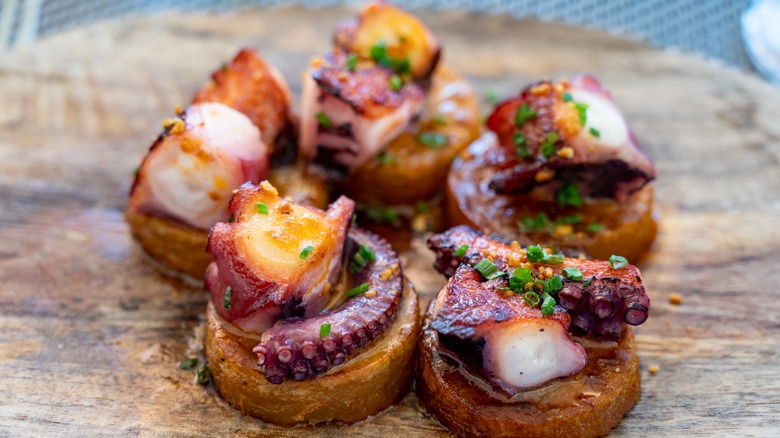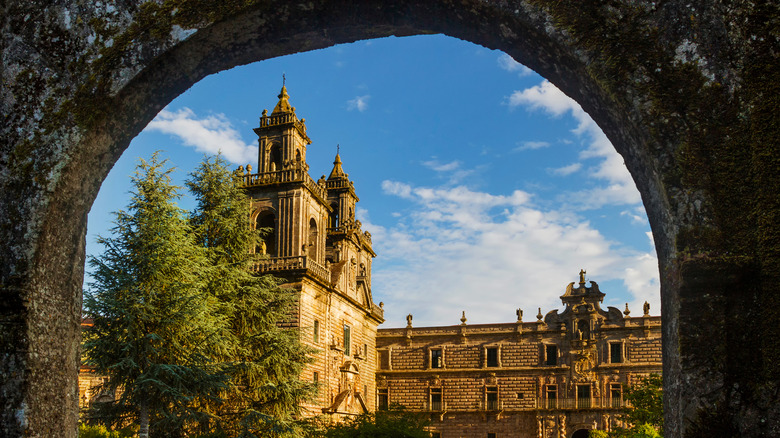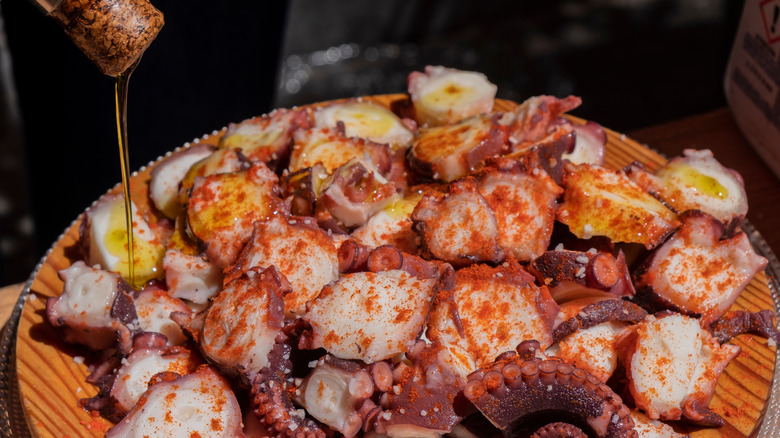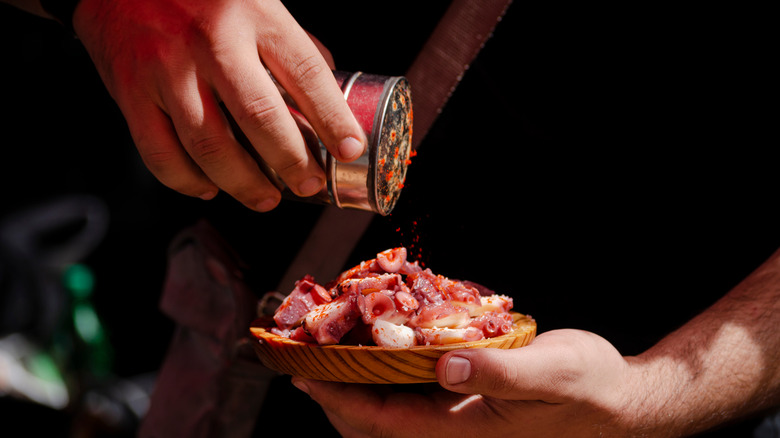Pulpo A La Gallega: Galicia's Delectable Octopus Dish
If you have ever been lucky enough to visit Spain, chances are you didn't opt to wander through the remote communities of Galicia. You may not have even heard of Galicia before. But, their unbelievable cuisine may make it worth a trip. This isolated Northwest region of Spain is an autonomous community and historic region that was once known as the kingdom of Galicia, as per Britannica. The rural countryside sees small villages that are relatively widespread, and the land encourages strong agricultural practices. The terrain is ideal for animal husbandry and the Atlantic oceanside location encourages large amounts of fishing. In fact, according to Britannica, Galicia's Vigo port is one of the leading fishing ports in the country.
As you would expect, seafood is commonly eaten in Galician diets. With fresh melt-in-your-mouth ocean-caught dishes, it's considered some of the best seafood in all of Spain. And, the most iconic dish for the region may just be pulpo a la Gallega, meaning Galician-style octopus. It's a traditional dish for the region and it dates back to the 16th century.
History of pulpo a la Gallega
Another common name for pulpo a la Gallega, is polbo á feira. The name, in Portuguese, means fair octopus, according to Spanish Dict. It is likely another name for the dish because pulpo a la Gallega is thought to have originated at a large cattle fair that took place in the town of Carballiño, Orense, Spain. This town, according to Foods and Wines from Spain, is located far from the coast and many visitors would descend on the town upon the arrival of the fair.
Monks at a local monastery located had to feed the many visitors, and, being so far away from the coast, they had to always dry their octopuses in order to preserve them. When it was time to cook it, they cut pieces of octopus into bite-sized sections and seasoned it with lots of olive oil and salt. This preparation style was a hit, and it soon spread across the region and, eventually, across Spain.
Ingredients in pulpo a la Gallega
It is easy to underestimate this dish due to the small and simple list of ingredients. However, pulpo a la Gallega is made of a near unbeatable combination, and it will leave even the pickiest of eaters wanting more.
According to Spain Food Sherpas, boiled octopus and potatoes are the main ingredients. The soft, sliced potatoes are layered around a serving plate, and the tender octopus is placed on top. You can use Desiree or King Edward potatoes and fresh frozen octopus is ideal. The octopus is usually cut into small, 1-inch pieces, making it perfect to share amongst a group. The final result is quite buttery, referring to the perfect texture of the octopus.
The only garnishes are a heavy drizzle of extra virgin olive oil, salt, and paprika. These uncomplicated toppings bring abundant flavor to the dish and will leave any diner wanting more.
How pulpo a la Gallega is made and eaten
One of the common pitfalls of cooking octopus is it either ends up too chewy or too mushy. The ideal tender octopus may seem out of reach, but it is simple to make. This dish requires fresh octopus, which requires tenderizing before cooking to avoid an overly-tough result. Traditionally, cooks tenderized the octopus by slamming it against a hard surface, such as a nearby wall or rock. However, in the modern era, simply tossing it in the freezer tenderizes the meat just fine. It should be left to freeze for at least a couple of days, per Mmmediterranean, for the best textural results.
The first step in the cooking process involved "scaring" the octopus. This means the octopus's head must be dipped in boiling water three times, so the skin does not come off later in the cooking process, per Spain Food Sherpas. The octopus can then be fully submerged in boiling water and cooked for half an hour. The potatoes are also boiled, after the octopus, for about half the time.
When ready to plate, the potatoes are sliced and the octopus is placed on top. Culture Trip notes that the dish is most commonly served on a thick wooden platter and eaten with toothpicks, for a real tapas experience. Now you're ready for your own at-home Galician tapas experience.



